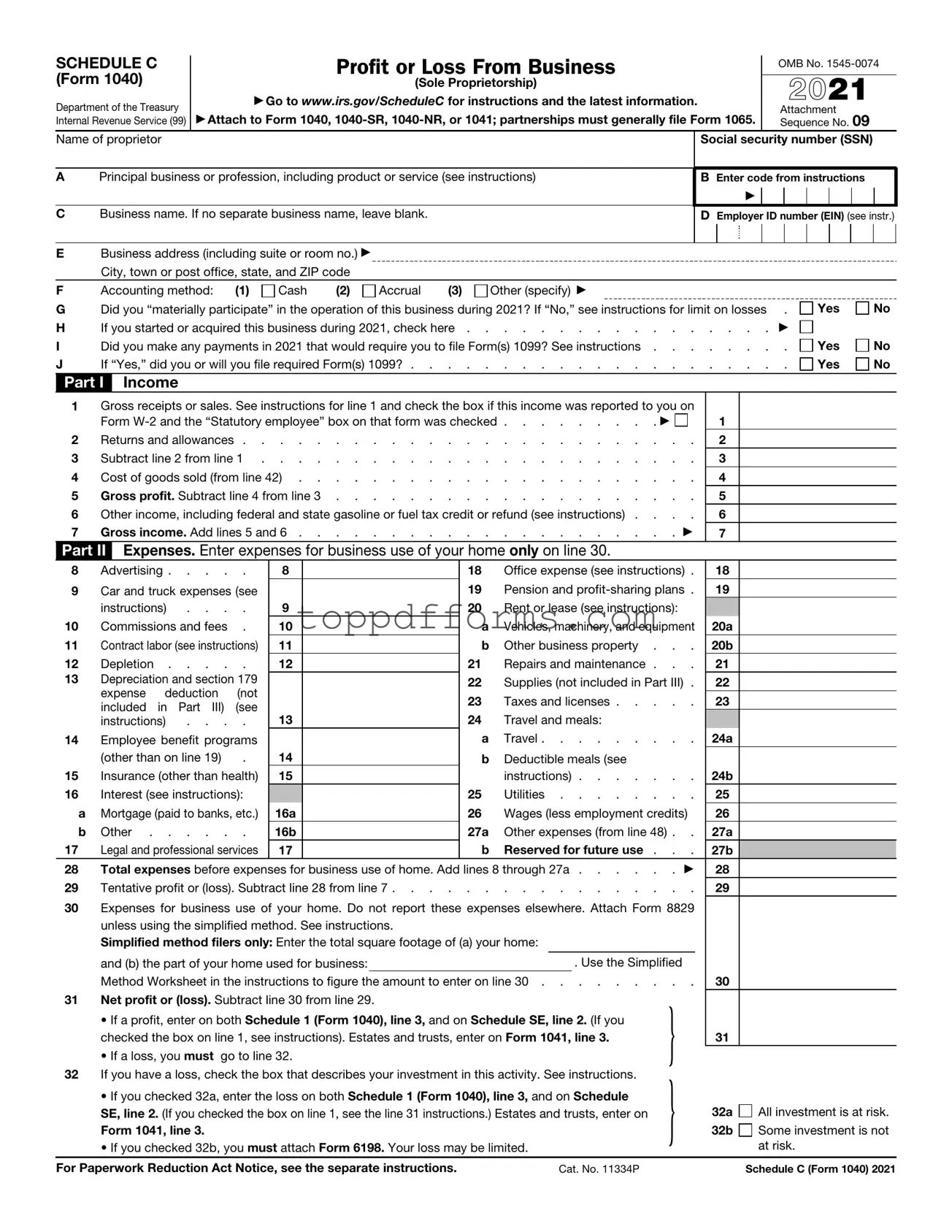What is IRS Schedule C?
IRS Schedule C is a form used by sole proprietors to report income and expenses from their business. It is part of the individual income tax return, Form 1040. If you run a business as a sole proprietor, you must file this form to calculate your profit or loss for the year.
Who needs to file Schedule C?
If you are self-employed and earned income from a business, you need to file Schedule C. This includes freelancers, independent contractors, and anyone who operates a business without forming a corporation or partnership.
What information do I need to complete Schedule C?
You will need to gather information about your business income and expenses. This includes records of sales, receipts, invoices, and any other documentation that supports your earnings and costs. You will also need your business name, address, and the nature of your business.
How do I report my business income on Schedule C?
Business income is reported in Part I of Schedule C. You will list your total income from sales and services. If you have any returns or allowances, you can subtract those from your gross income to arrive at your net income.
What types of expenses can I deduct on Schedule C?
You can deduct various business expenses, including costs for supplies, utilities, rent, advertising, and travel. It’s essential to keep accurate records of all expenses to substantiate your claims. Personal expenses cannot be deducted.
Can I deduct home office expenses on Schedule C?
Yes, you can deduct home office expenses if you use part of your home exclusively for business. This can include a portion of your rent or mortgage, utilities, and internet costs. Be sure to follow IRS guidelines to qualify for this deduction.
What happens if I have a loss on Schedule C?
If your business expenses exceed your income, you will report a loss. This loss can offset other income on your tax return, which may reduce your overall tax liability. However, you need to ensure that your business is legitimate and not classified as a hobby.
Do I need to pay self-employment tax if I file Schedule C?
Yes, if you earn a net profit from your business, you will likely need to pay self-employment tax. This tax covers Social Security and Medicare contributions. It’s calculated on Schedule SE, which you will file along with your Form 1040.
When is Schedule C due?
Schedule C is due on the same date as your personal income tax return, which is typically April 15. If you need more time, you can file for an extension, but any taxes owed must still be paid by the original deadline to avoid penalties.
Where can I find IRS Schedule C and instructions?
You can find IRS Schedule C and the accompanying instructions on the IRS website. They are available for download in PDF format. It’s crucial to use the most current version of the form to ensure compliance with tax laws.
